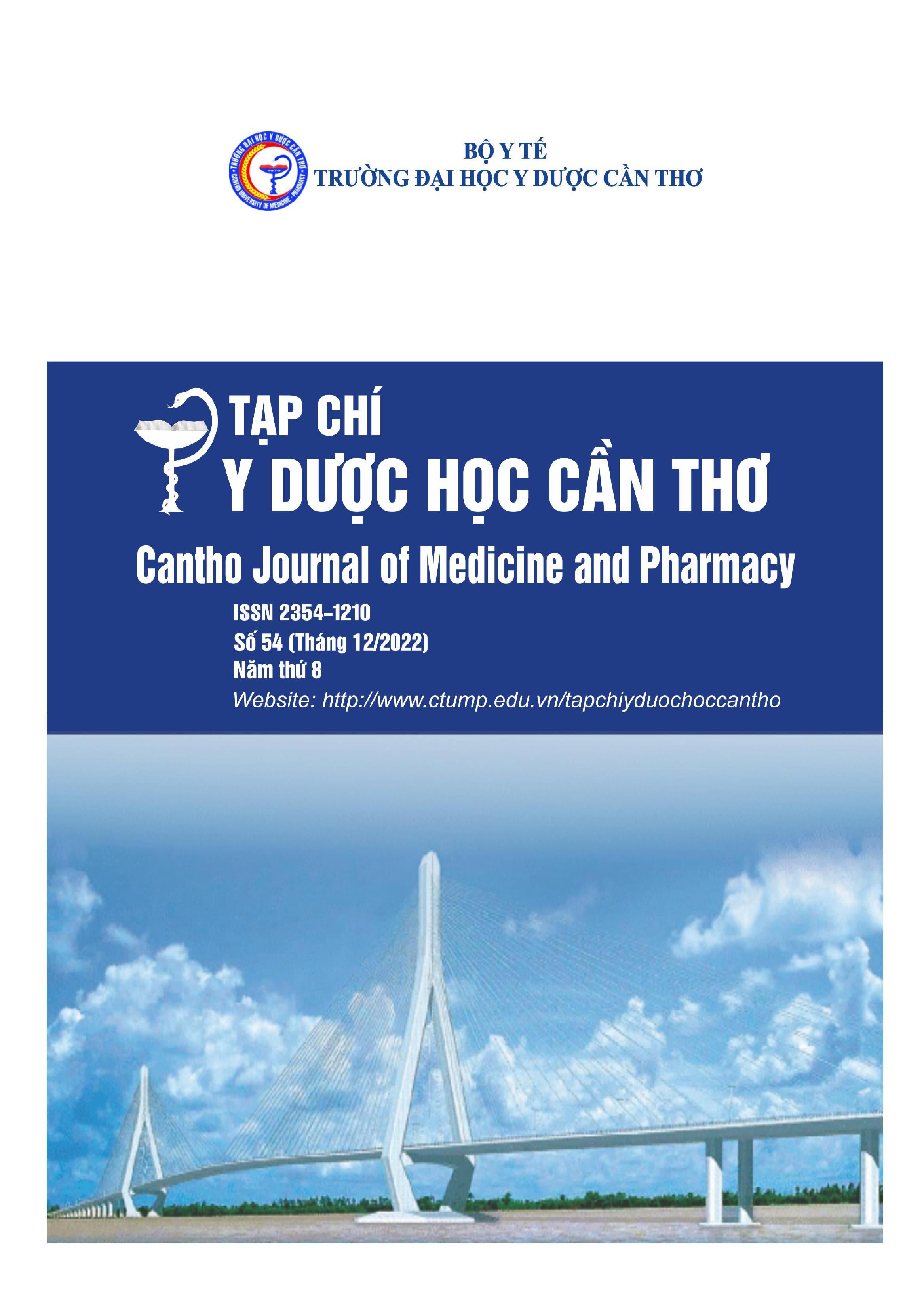CLINICAL FEATURES, DIGITAL RADIOGRAPHY OF RESTORATIONS IN PREMOLAR TEETH BY PORCELAIN INLAYS AT CAN THO UNIVERSITY OF MEDICINE AND PHARMACY HOSPITAL IN 2019-2021
Main Article Content
Abstract
Background: Nowadays restoring posterior lesions by indirect methods, particularly in premolar teeth, is an attractive and modern field in dentistry. Porcelain inlays have some advantages, such as high precision, restoring the anatomical shape of crowns and overcoming many disadvantages of direct restorations. Objective: To describe clinical features, digital radiography and evaluate the result of restorations in premolar lesions by porcelain inlays at Can Tho University of Medicine and Pharmacy Hospital in 2019-2021. Materials and methods: The uncontrolled clinical interventional study includes 35 teeth with class II lesions at Can Tho University of Medicine and Pharmacy Hospital. Results: The result of clinical features and digital radiography of porcelain inlays include 80% knowledgeable person, 80% relating to failure restorations, most of them were 42.9% losing fillings, 85.7% average size. 25.7% carious dentin leaded to 71.4% visiting for sensitivity. Conclusion: Almost the knowledgeable and young people choose porcelain inlays and the main purpose for visiting is failure fillings. Porcelain inlays in posterior teeth, particularly premolar, overcome direct replacement’s disadvantages.
Article Details
Keywords
Ceramic inlays, indirect restoration, premolar
References
2. Trần Văn Đức (2020), “Đánh giá kết quả phục hồi bằng inlay composite ở bệnh nhân tổn thương thân răng sau tại bệnh viện trường Đại học Y dược Cần Thơ”, Tạp chí Y học thực hành, 1140(7), tr.275-7.
3. Phạm Thị Thu Hằng (2009), Đánh giá kết quả phục hồi thân răng bằng inlay onlay cho răng sau, Luận án Tiến sĩ y học, Đại học Y dược TP HCM.
4. Nguyễn Trần Kim Hoàng (2018), Khảo sát ảnh hưởng của vật liệu lên sự phân bố ứng suất trên Inlay, Luận văn Bác sĩ nội trú, Đại học y dược TP.HCM
5. Bùi Thế Khuê (2012), Đánh giá kết quả phục hồi tổn thương thân răng bằng Inlay sứ E.max press cho nhóm răng sau, Luận văn Bác sĩ chuyên khoa II, Đại học Y Hà Nội.
6. Hồ Xuân Anh Ngọc (2019), “Đánh giá in vitro vi kẽ trong phục hồi xoang loại II bằng inlay sứ Zirconia”, Tạp chí Y Dược học Huế, 9(5), tr.61-7.
7. Blunck U, Fischer S, Hajtó J, Frei S (2020), “Ceramic laminate veneers: effect of preparation design and ceramic thickness on fracture resistance and marginal quality in vitro”, Clinical Oral Investigations, 24(8), p.2745-54.
8. Bustamante-Hernández N, Montiel-Company JM, et al. (2020), “Clinical Behavior of Ceramic, Hybrid and Composite Onlays. A Systematic Review and Meta-Analysis”,International journal of environmental research and public health, 17(20).
9. Salama A (2019), “Ceramic Inlay Effectivness Versus other Restorative Treatments: A Literature Review”, Dental 1(1), p.1-9.
10. Ryge G, Snyder M (1973), “Evaluating the clinical quality of restorations”, Journal of the American Dental Association, 87, pp. 369-377.


